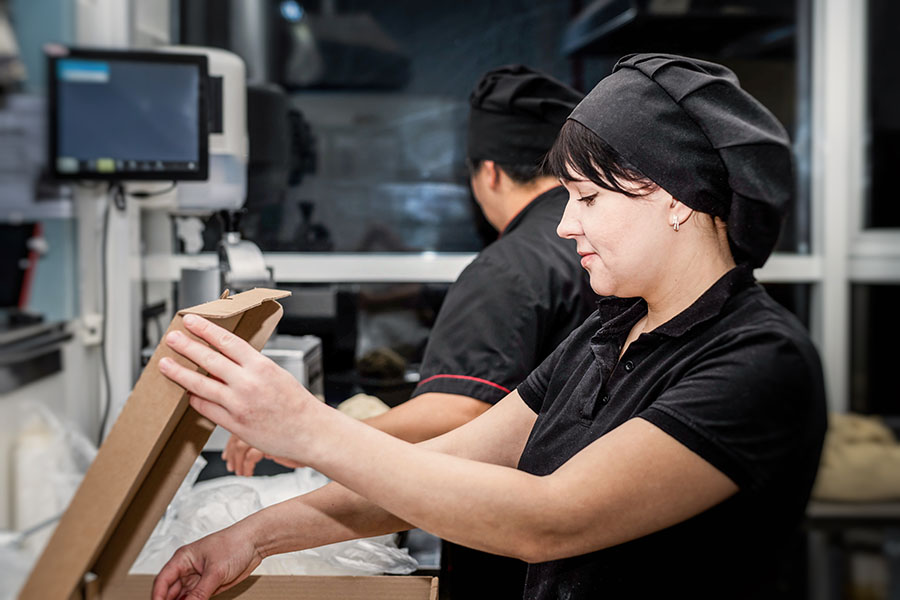Restaurant Operators Are Increasing Prices, Changing Vendors, Tracking Inventory and Streamlining Menus to Manage Costs
After years of difficulty retaining employees, U.S. restaurants are starting to see positive changes, according to a study released Tuesday by restaurant software firm Restaurant365. The California-based company gathered input from 5,000 U.S. restaurants to learn how they are coping with competing goals of growth and navigating inflation.
Since the start of the year, 9 percent more restaurants are reporting staff turnover of 10 percent or lower, according to the R365 survey, and nearly 79 percent of restaurants cite turnover rates below 25 percent. Joe Hannon, general manager of inventory and sales at R365, credits increased use of performance-based incentives and training programs as part of that positive change. “Building more clear career paths” encourages top employees to stick around, he tells Pizza Today. Meanwhile, more companies are offering customizable courses that permit staff members to build the skills they find most interesting.
Hannon reports many restaurant operators are re-evaluating their management structures this year while adding lower-paid positions such as tablet runners to offset labor expenses. To further target labor costs, operators increasingly are using scheduling tools that align with sales data to improve efficiency while ensuring coverage during peak times.
Food and Labor Costs
Not surprisingly, food and labor costs are the top concerns for restaurant operators in mid-2025.
Increased Labor Costs: According to R365’s midyear report, 89 percent of survey respondents are experiencing increased labor costs in 2025 – an 11 percent increase from earlier in the year – with the greatest share (61.72 percent) reporting increases of 1-5 percent.
Increased Food Costs: Meanwhile, 91 percent of those surveyed report increased food costs, with 50.47 percent citing increases of 1-5 percent.
“Throughout the years, food costs and staff retention have continued to be among the largest challenges facing restaurants – with retention oftentimes taking the top slot,” Hannon says. “Sales volume has been a recurring concern as well.”
While the challenges facing restaurants are relatively consistent, operators are embracing a variety of tactics to help deal with ongoing inflation and associated challenges. For example, R365 reports restaurants are taking the following actions to get a handle of budgets:
55.75%: Menu price increases
19.82%: Supplier and vendor changes
19.97%: More frequent inventory and waste tracking
6.45%: Smaller/limited menu
While increasing the price of menu items is the most-cited way restaurateurs are dealing with inflation, Hannon says the number of operators looking to make up budget shortfalls through price increases is down significantly from just a few years ago. “This number has been consistently decreasing from previous years. … In 2022, 93 percent of respondents raised prices,” he tells Pizza Today.
Restaurant Expansion Slows
As restaurant operators implement solutions to bring their sales and expenses into better alignment, Hannon says R365 has seen a shift in expansion plans. For example, 46 percent of those surveyed report they are delaying new locations – a 12 percent increase from earlier this year. Those groups that do plan to expand are doing so in more measured ways, with 19 percent looking to open a single location, 20 percent planning to open two to five sites and just 3 percent eyeing six or more additional restaurants.
“Rising food and labor cost, inflation and tariffs are making operators more cautious about expansion,” Hannon says.
Indeed, 64 percent of operators expect tariffs will cause food costs to rise, and even more (78 percent) expect tariffs to impact their business in some way in 2025, according to the R365 survey. Earlier this year, the National Restaurant Association projected tariffs could cost the average operator 30 percent in profits.
While some operators are hitting pause on expansion efforts, “others are seizing the moment to grow strategically,” Hannon says. “Operators are being more selective, focusing on markets and models that align with long-term success.”
New Profit Centers
With expansion plans on hold – and to cope with increased costs – many operators are looking to new opportunities to generate revenue. Nearly one-third of those surveyed by R365 (31.14 percent) are concentrating on catering, and 22.37 percent are looking to grow profits through special events and promotions.
To keep the balance sheet moving in a positive direction, restaurant operators say they are investing in the following priorities:
40.00%: Marketing tech, promotions and loyalty programs
21.30%: Tech spend (POS, BoH, analytics)
16.96%: Salary increases and recruitment
6.69%: Automation (kiosks and robotics)
Despite ongoing challenges, restaurant sales are expected to surpass $1.5 trillion in 2025, with total industry workforce growing to 15.9 million employees, according to statistics from the National Restaurant Association. The full



